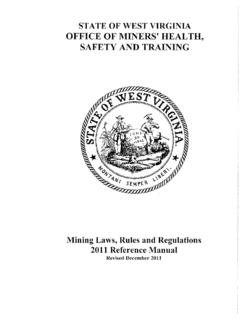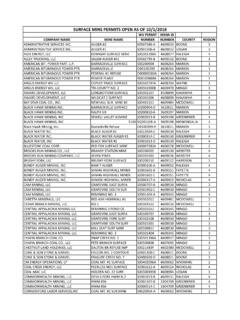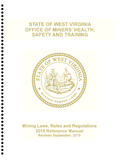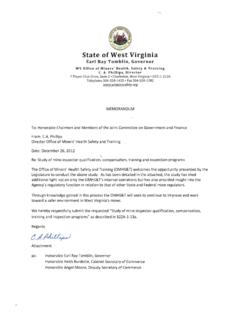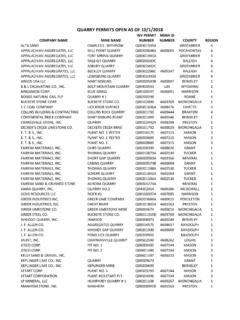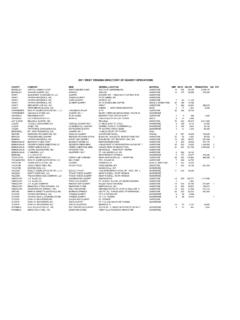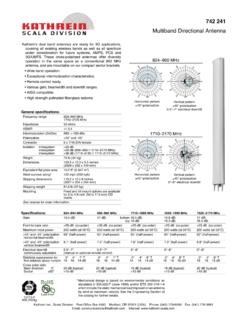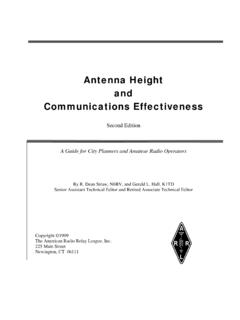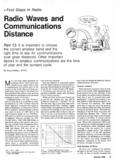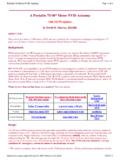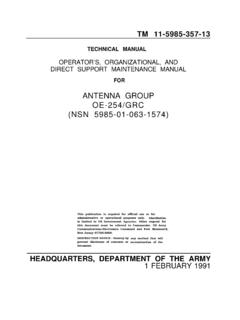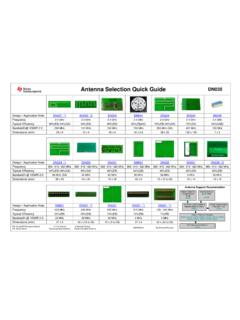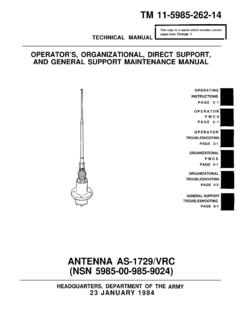Transcription of RADIO FREQUENCY COMMUNICATION SYSTEMS …
1 RADIO FREQUENCY COMMUNICATION SYSTEMS IN underground mines L. K. Bandyopadhyay, P. K. Mishra, Sudhir Kumar and A. Narayan Central Mining Research Institute, Barwa Road, Dhanbad-826001, India ABSTRACT: Due to the high attenuation of RADIO FREQUENCY (RF) signals in underground mines and the statutory power restriction of COMMUNICATION gadgets especially for coal mines , the wireless COMMUNICATION SYSTEMS have restricted applications in the underground mines . The paper discusses different RADIO FREQUENCY COMMUNICATION techniques being employed for Indian underground mines . Experiments were conducted in the laboratory as well as in the underground coal mines for medium wave FREQUENCY (MF), very high FREQUENCY (VHF) and ultra high FREQUENCY (UHF) electromagnetic propagation as well as induction technique to meet different types of mining conditions.
2 The detailed results have been presented in this paper. INTRODUCTION: underground mines , which are characterized by their tough working conditions and hazardous environments, require fool-proof mine-wide COMMUNICATION SYSTEMS for smooth functioning of mine workings and ensuring better safety. Proper and reliable COMMUNICATION SYSTEMS not only save the machine break down time but also help in immediate passing of message from the vicinity of underground working area to the surface for speedy rescue operation. Therefore, a reliable and effective COMMUNICATION system is also an essential requisite for safety in underground mines . All existing SYSTEMS are based on line COMMUNICATION principle (wired) [1], hence these are unable to withstand in the disaster conditions as well as formidable in inaccessible places.
3 Non-symmetric mine topology and complex mine structure put further hindrance on the way of line COMMUNICATION . Therefore, wireless COMMUNICATION [1] is indispensable, most reliable, convenient system and must to combat such disaster situations. FREQUENCY modulated (FM) transceivers with directional or active antenna [2] linked with leaky feeder cables and repeater amplifiers at regular intervals can be used for reliable and appropriate mine-wide COMMUNICATION SYSTEMS for underground mines [3]. The portable transceivers are being used so that it can be carried even in inaccessible places in underground mines . In nutshell, RF COMMUNICATION would be the most suitable and reliable COMMUNICATION system for safety application in the coal mines . It would also help to increase production and productivity in mines . COMMUNICATION TECHNIQUES The COMMUNICATION SYSTEMS required for an underground mine can be divided into following four categories based on purposes and locations: (i) Shaft COMMUNICATION (ii) Straight gallery COMMUNICATION (iii) Mine-wide COMMUNICATION and (iv) Trapped miner COMMUNICATION Shaft COMMUNICATION : Bell signaling system is being used today in most of the Indian underground mines .
4 But this system is having its own drawbacks. Therefore, a need exists for improved hoist communications between the skip and the hoist operator. A induction theory based COMMUNICATION system using hoist/guide rope as a carrier current is being developed. This system provides reliable two-way voice COMMUNICATION between moving cage and hoist man. The system transmits and receives RADIO FREQUENCY (RF) energy over a transmission line through hoist/guide rope. The system also utilizes transceivers that communicate with each other by RF currents superimposed on a cable. The system consists of one base station attached with a loop antenna of 485 KHz FREQUENCY and a shoulder antenna attached with a transceiver set of the same FREQUENCY . During transmission, the sending transceiver feeds its loop antenna with a FREQUENCY modulated (FM) carrier.
5 The antenna induces a signal into the hoist rope, which travels up and down the hoist rope and is picked up by the transceiver attached with shoulder antenna. The loop antenna and shoulder antenna operates as both a transmitting and receiving element. The loop antenna with the base station is clamped with hoist/guide rope at a point just above the cage. 2 Straight Gallery COMMUNICATION : RADIO system covers voice communications within the underground mine. In the ultra high FREQUENCY (UHF) band, attenuation is relatively low in the straight mine entries and is significantly higher when the signal propagates around a corner or when a massive piece of machinery is in the path of propagation. At frequencies in the range of 200-4000 MHz, a coal mine tunnel act as a low-loss dielectrics and dielectric constants in the range of 5-10.
6 The cutoff FREQUENCY for rectangular tunnel/mine galleries can be roughly estimated as [4]: (1) Where a and b represent tunnel width and height, respectively. m and n are numbers of half wavelengths (hybrid electromagnetic modes HEMmn) that will fit in the a and b dimension. and ? are the dielectric and permeability constants. The low-loss dielectric oversized waveguide supports many hybrid electromagnetic modes HEMmn. Laakman and Steier [5] have shown that the propagation constant ?g associated with each mode (m, n) can be expressed explicitly, provided that the transverse dimensions a and b as well as wavelength ? verify the following inequalities: and (2) In this case, the propagation constant is given by: (3) With (4) and (5) Where (6) Where and are the free-space permittivity and relative permittivity, respectively.
7 And are the angular FREQUENCY and the conductivity, respectively. Note that Re means real part of the variable. Equation (4) indicates that the attenuation of the RADIO wave propagation in an empty, straight and unobstructed rectangular tunnel is proportional to and and thus decreases as the square of the FREQUENCY but only if the wall roughness remains small. Equation (5) represents the phase difference of different HEMmn mode with respect to propagation in free space. An electromagnetic wave travelling along a rectangular tunnel in a dielectric medium can propagate in any one of a number of allowed waveguide modes. All of these modes are lossy modes because any part of the wave that impinges on a wall of a tunnel is partially refracted around the surroundings and partially reflected back into the waveguide.
8 The refracted part propagates away from the waveguide and represents a power loss. The attenuation rates of the waveguide modes depend almost entirely on refraction loss. The overall loss in strength, in a straight gallery, is the sum of propagation loss and the insertion loss of the transmitting and receiving antennae. It has been found that the total loss is minimal in the range of about 450-1000 MHz, depending on the desired COMMUNICATION distance and tunnel dimension. Mine-Wide COMMUNICATION Large attenuation of RADIO wave in hard concrete coal strata posses a problem in covering the large COMMUNICATION range. Labyrinth path and complex geological conditions of mines further put hindrance in wireless COMMUNICATION . Corners and bends in underground mine galleries present the obstacles to the propagation of UHF RADIO waves.
9 But if an active antenna is placed near / at the turn of the path, the signal may be amplified to give better 3 COMMUNICATION . Further, we can not go for higher wattage of transceivers due to intrinsic safety limit in hazardous area ( coal mine). In order to establish mine wide COMMUNICATION system keeping in view of all the above conditions, we propose leaky feeder cables as antenna as well as transmitting lines. A leaky feeder [2, 3] allows signals to leak out of or into itself at a controlled rate. It effectively behaves as a long antenna that can guide RADIO waves around corners and bends. The COMMUNICATION system is featured by very high FREQUENCY (VHF) FREQUENCY modulated (FM) high band operation in the 146-174 MHz with an acceptable RADIO FREQUENCY (RF) power output as required for an underground mine.
10 The cable is characterized by excellent FREQUENCY response over the required spectrum to meet the specifications of mine industries. It may be fire resistant, water resistant, etc. according to the needs of the same. Line amplifiers are inserted after every 350 meters of the cable to automatically compensate for the RF loss or other additional loss in the cable. These amplifiers operate independently in both the forward and reverse directions. All equipments connected to the cable are powered from the cable itself. The VHF transceivers with intrinsically safe within 2 watts with loop antenna and leaky feeder cable as transmitting media followed by repeater at regular intervals would be used for COMMUNICATION through galleries. Due to skin effect phenomena, the RADIO waves emit (leak) in larger periphery through leaky feeder cables and with help of repeater, the attenuated waves can be further amplified.
